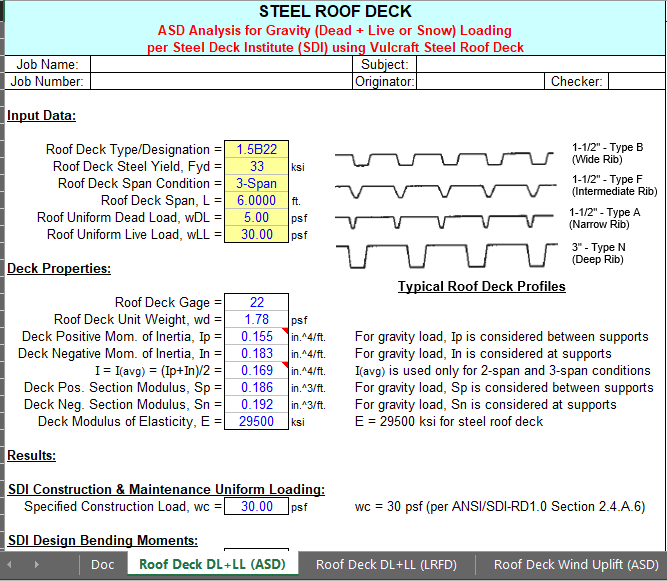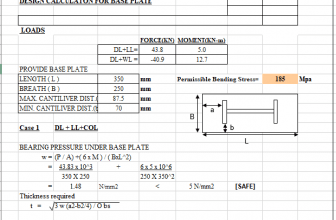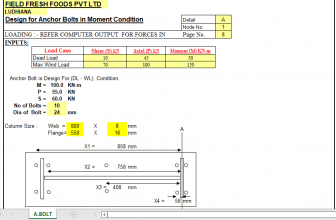
“ROOFDECK” — ROOF STEEL DECK ANALYSIS / DESIGN
Program Description:
“ROOFDECK” is a spreadsheet program written in MS-Excel for the purpose of analysis and design of roofs with
steel deck. Specifically, roof decks subjected to gravity loading (dead + live or snow) and wind uplift loading can
be analyzed using either ASD or LRFD methods. Bending stresses as well as deflections are checked. Roof
decks can be analyzed for either 1-span, 2-span, or 3-span configurations.
This program is a workbook consisting of five (5) worksheets, described as follows:
Worksheet Name Description
Doc This documentation sheet
Roof Deck DL+LL (ASD) ASD Analysis for Gravity (Dead + Live) Loading
Roof Deck DL+LL (LRFD) LRFD Analysis for Gravity (Dead + Live) Loading
Roof Deck Wind Uplift (ASD) ASD Analysis for Wind Uplift using ASCE 7 Loading
Roof Deck Wind Uplift (LRFD) LRFD Analysis for Wind Uplift using ASCE 7 Loading
Program Assumptions and Limitations:
- This program is based on the following references:
a. “Steel Roof and Floor Deck” Catalog – by Vulcraft Corporation, 2008
b. ASTM E936 (2004) – Standard Practice for Roof System Assemblies Employing Steel Deck, Preformed
Roof Insulation, and Bituminous Built-Up Roofing
c. “Design Manual and Catalog of Steel Deck Products” – by CMC (United Steel Deck), 2008 - This program handles Vulcraft steel roof deck of the following types/styles:
a. 1.5A – Type A 1-1/2″ deep narrow rib
b. 1.5B – Type B 1-1/2″ deep wide rib
c. 1.5F – Type F 1-1/2″ deep intermediate rib
d. 3N – Type N 3″ deep acoustical - While the user can quickly and easily make a roof deck selection based on gravity loads directly from the
Vulcraft catalog, the “Roof Deck DL+LL (ASD)” and “Roof Deck DL+LL (LRFD)” worksheets provide the user
with the ability to demonstrate the selection and analysis with actual calculations if desired or required. - In most deck vendor catalogs, only the deck moment of inertia for positive bending, “Ip”, is used for deflection
calculations. However, in the “Roof Deck DL+LL (ASD)” and “Roof Deck DL+LL (LRFD)” worksheets, the
value of “Ip” is used only for a single-span conditions. For multispan conditions, these two worksheets use
the average value, I(avg) = (Ip+In)/2, for deflection calculations as noted on page 4 of Reference 1c above. - In the “Roof Deck Wind Uplift (ASD)” and “Roof Deck Wind Uplift (LRFD)” worksheets, roof uplift wind
pressures for roof zones 1, 2, and 3 can be derived from the applicable ASCE 7 Standard when meeting the
provisions of Factory Mutual Global is not required. When meeting the provisions of Factory Mutual Global is
required, roof uplift wind ratings for roof zones 1, 2, and 3 can be derived from FMG Data Sheet 1-28:
“Wind Design” (Reference 1c above). - For components and cladding (roof deck, fasteners, and above deck components), FMG 1-28 requires that
the effective area be set = 10 ft.^2 along with an Importance Factor = 1.15.
For secondary supporting members (purlins or joists) per FMG 1-28 Section 2.2.3, refer to applicable
ASCE 7 Standard and apply the appropriate effective tributary area along with an Importance Factor = 1.15. - This program contains numerous “comment boxes” which contain a wide variety of information including
explanations of input or output items, equations used, data tables, etc. (Note: presence of a “comment box”
is denoted by a “red triangle” in the upper right-hand corner of a cell. Merely move the mouse pointer to the
desired cell to view the contents of that particular “comment box”.)





